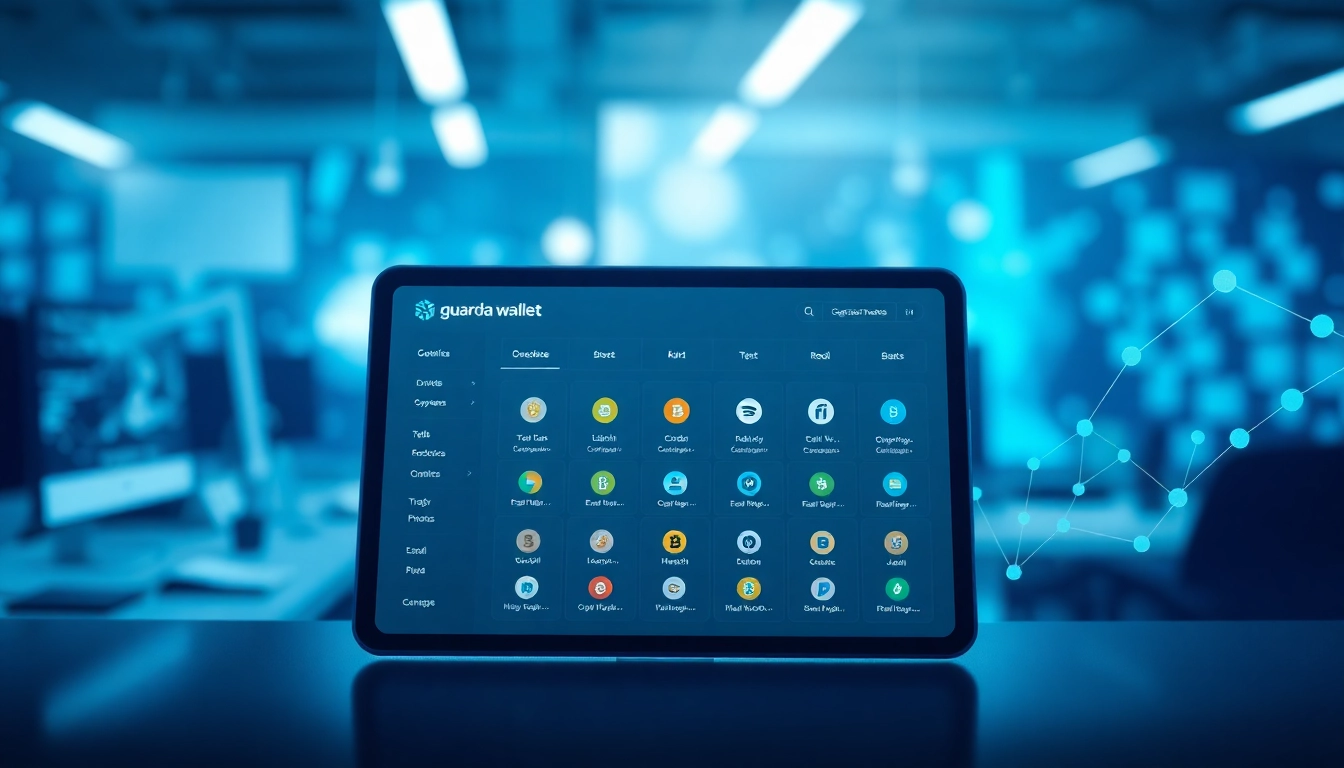Understanding Exodus Wallet: A Beginner’s Guide
What is Exodus Wallet?
The exodus wallet is a popular cryptocurrency wallet that offers a seamless experience for managing and exchanging digital assets. Founded in 2015, Exodus positions itself as a user-friendly interface catering to both novice and experienced cryptocurrency users. Unlike traditional wallets tied to bank accounts, Exodus allows individuals to govern their private keys and assets, providing a decentralized approach to cryptocurrency management. This means that users can hold, send, and receive various cryptocurrencies while maintaining control over their funds.
Features of the Exodus Wallet
One of the standout features of Exodus Wallet is its multichain capability. It supports over 160 cryptocurrencies, enabling users to manage a diverse portfolio within a single platform. Key features include:
- Built-in Exchange: Users can swap various cryptocurrencies directly within the wallet without the need for external exchanges.
- User-Friendly Interface: The wallet boasts an intuitive design that simplifies the user experience, making it accessible for beginners.
- Portfolio Manager: The wallet provides tools for tracking crypto performance, offering insights into asset distribution and growth over time.
- Integration with Hardware Wallets: Users can enhance their security by connecting Exodus with hardware wallets like Trezor.
User Interface and Experience
The user experience of Exodus Wallet is one of its most lauded attributes. The dashboard presents a clear and attractive layout, highlighting essential functionalities without overwhelming the user. Navigation is straightforward, with easy access to features such as sending and receiving funds, viewing transaction history, and managing multiple cryptocurrency types effortlessly. Overall, Exodus triumphs where complexity often deters users, making it an excellent choice for individuals entering the cryptocurrency space.
How to Set Up Your Exodus Wallet Effectively
Step-by-Step Installation Process
Setting up your Exodus Wallet is a simple and quick process. Here’s a step-by-step guide:
- Download: Go to the official Exodus website or your device’s app store and download the wallet application.
- Create Your Wallet: Once downloaded, launch the application. You will be prompted to create a new wallet, which involves choosing a password for access.
- Backup Your Wallet: Following wallet creation, Exodus will ask you to back up your recovery phrase. This is crucial for accessing your funds if you forget your password or lose access to your device.
Creating Your Wallet and Backup Options
The creation of your wallet involves generating a unique recovery phrase—typically a set of 12 randomly selected words. This phrase should be written down and stored safely, as it is the only way to recover your wallet in case of a lost or stolen device. Exodus also encourages users to adopt an additional backup strategy by utilizing cloud services or external storage solutions for added security.
Understanding the Wallet Dashboard
Upon successful setup, users are directed to the wallet dashboard. This interface showcases the primary functionalities available:
- Asset Overview: The dashboard provides a quick view of all your holdings along with their current values.
- Transaction Options: Sending and receiving cryptocurrencies can be done directly from this screen.
- Settings Menu: Customizations, including security settings and notifications, can be managed here.
Familiarity with the dashboard is crucial for efficient management of your assets within the wallet.
Managing Your Cryptocurrency with Exodus Wallet
Sending and Receiving Cryptocurrencies
Managing your cryptocurrencies within Exodus Wallet is straightforward. To send funds, users simply need to input the recipient’s wallet address, select the amount, and confirm the transaction. Receiving funds is equally simple: users can share their wallet address or use a QR code provided within the app. Transactions usually occur quickly, but users should remain mindful of network congestion that may delay processing times.
Utilizing Built-in Exchange Features
Exodus Wallet’s built-in exchange allows users to trade one cryptocurrency for another without leaving the app. This feature supports various coins and means users can diversify their portfolios or capitalize on market fluctuations without needing to transfer funds to an external exchange platform. The trading interface is designed for ease of use, displaying conversion rates and fees clearly before users finalize their swaps.
Exploring Portfolio Management Tools
The portfolio management tools in Exodus empower users to track their investment performance in real-time. Users can monitor total asset values, percentage changes, and historical performance through visually appealing graphs. This helps in making informed decisions about when to buy, sell, or hold specific cryptocurrencies.
Exodus Wallet Security: Essential Best Practices
Understanding Hot vs. Cold Wallets
Exodus Wallet operates as a hot wallet, meaning it is connected to the internet and is suitable for everyday transactions. While convenient, hot wallets are more vulnerable to hacking attempts compared to cold wallets, which store cryptocurrencies offline. Therefore, users must take rigorous security measures, especially for substantial holdings. To balance convenience and security, users often pair hot wallets like Exodus with cold storage options for larger sums.
Two-Factor Authentication and Other Security Measures
While Exodus does not currently support two-factor authentication (2FA) directly, users are encouraged to employ thorough password practices and backup their wallets securely. Address whitelisting, which restricts transactions to predetermined addresses, can enhance security. Additionally, keeping the wallet software updated ensures users benefit from the latest security enhancements and features.
Common Security Risks and How to Avoid Them
Common risks associated with cryptocurrency storage include phishing attacks, malware, and device loss. Users can mitigate these risks by sticking to trusted platforms, always being wary of unsolicited messages asking for wallet information, and using antivirus software to protect their devices. Regularly reviewing transaction activity can help users spot any unauthorized action quickly.
Advanced Features and Future Developments for Exodus Wallet
Integrating Ethereum and Web3 Applications
As blockchain technology evolves, Exodus is positioned to integrate more advanced features, including better support for Ethereum and decentralized applications (dApps). These advancements will allow users to engage with the growing Web3.0 ecosystem directly from their wallets. Users can expect functionality that includes staking, DeFi integration, and NFT management, aligning Exodus with broader blockchain trends.
Passive Income with Exodus Wallet
Exodus Wallet provides users with options to earn passive income through various features such as staking certain cryptocurrencies. This means users can earn rewards or interest on their holdings just by keeping them stored in their Exodus Wallet. As DeFi (decentralized finance) gains traction, these passive income features will likely expand, allowing users to maximize their returns effortlessly.
Upcoming Updates and Enhancements
The Exodus development team is continually working on enhancements, including additions to their swap service and UI improvements. As the interest in digital assets rises, so does the focus on offering educational resources and customer support to empower users in making informed decisions. Updates regarding upcoming features are regularly shared through their official blog and social media channels, ensuring users remain well-informed on the wallet’s capabilities.



